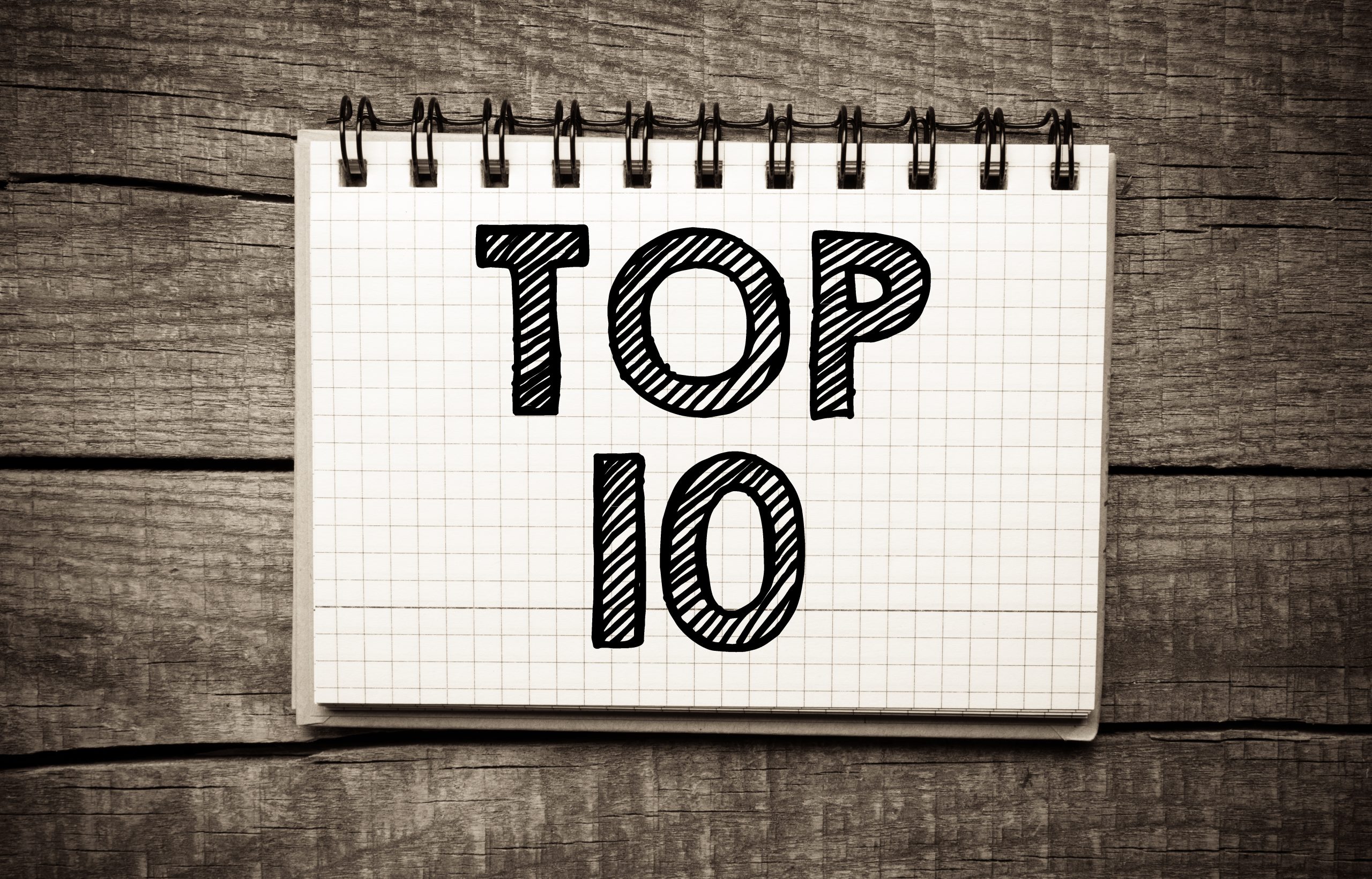 Taking a look back at the previous year of patents granted by the U.S. Patent and Trademark Office (USPTO) always affords an interesting view of the state of technologies being developed around the world. At the end of each calendar year, IPWatchdog puts together a list of the Top 10 most interesting patents granted by the USPTO during the previous 12 months. Many of this year’s choices involve major patent or IP stories from 2022, including our top selection, which claims a technology implicating artificial intelligence creatorship issues. Other patents selected for this year’s list protect advancements representing our society’s increased reliability on virtual environments for gaming and even business activities. We hope you enjoy this Top 10 list, and feel free to leave suggestions for honorable mentions in the comments to this article. Here’s to a happy and innovative 2023!
Taking a look back at the previous year of patents granted by the U.S. Patent and Trademark Office (USPTO) always affords an interesting view of the state of technologies being developed around the world. At the end of each calendar year, IPWatchdog puts together a list of the Top 10 most interesting patents granted by the USPTO during the previous 12 months. Many of this year’s choices involve major patent or IP stories from 2022, including our top selection, which claims a technology implicating artificial intelligence creatorship issues. Other patents selected for this year’s list protect advancements representing our society’s increased reliability on virtual environments for gaming and even business activities. We hope you enjoy this Top 10 list, and feel free to leave suggestions for honorable mentions in the comments to this article. Here’s to a happy and innovative 2023!
#1: U.S. Patent No. 11430171, Explainable Artificial Intelligence
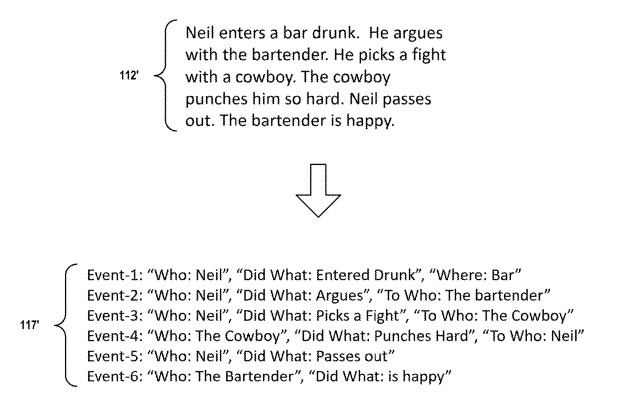 The legal landscape for IP during 2022 was marked with several important rulings that reversed momentum that had been building for ownership of IP rights by artificial intelligence (AI) creators. This August, the U.S. Court of Appeals for the Federal Circuit issued a ruling in Thaler v. Vidal holding that DABUS AI, an AI system listed as the sole inventor on a pair of patent applications denied by the USPTO, could not qualify as a “natural human” for purposes of inventorship statutes codified at 35 U.S.C. § 101 and 35 U.S.C. § 115. Then in late October, the U.S. Copyright Office issued a notice to artist Kristina Kashtanova indicating that a copyright registration for her partially AI-created novel Zarya Of The Dawn, the first known AI-created work to receive a U.S. copyright registration, could be canceled for human authorship issues.
The legal landscape for IP during 2022 was marked with several important rulings that reversed momentum that had been building for ownership of IP rights by artificial intelligence (AI) creators. This August, the U.S. Court of Appeals for the Federal Circuit issued a ruling in Thaler v. Vidal holding that DABUS AI, an AI system listed as the sole inventor on a pair of patent applications denied by the USPTO, could not qualify as a “natural human” for purposes of inventorship statutes codified at 35 U.S.C. § 101 and 35 U.S.C. § 115. Then in late October, the U.S. Copyright Office issued a notice to artist Kristina Kashtanova indicating that a copyright registration for her partially AI-created novel Zarya Of The Dawn, the first known AI-created work to receive a U.S. copyright registration, could be canceled for human authorship issues.
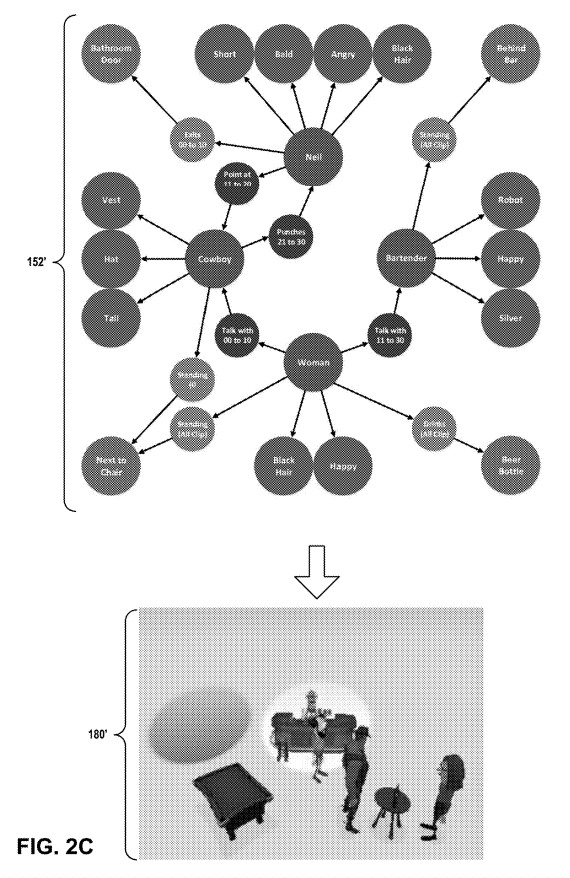 It’s that particular context that makes the technology claimed by the ‘171 patent, issued on August 30 to Menlo Park, CA-based SRI International, our pick for the top patent of 2022. The patent claims a method for identifying a relevant animation by receiving a text search query describing motion performed by an actor, training a machine learning model to predict an animation from textual input, generating a search animation including visual information representing the actor’s motion, comparing a plurality of animations to generate a comparison score and identifying relevant animations based on the comparison score. According to the ‘171 patent’s written description, the claimed method enables techniques for interactive storytelling by generating animations or even movie scenes based on textual input from a human author. Given this year’s U.S. court rulings on AI creatorship, determining where the copyright for AI-generated animations generated through this claimed method will vest is an interesting question that will continue to be asked through 2023 and beyond.
It’s that particular context that makes the technology claimed by the ‘171 patent, issued on August 30 to Menlo Park, CA-based SRI International, our pick for the top patent of 2022. The patent claims a method for identifying a relevant animation by receiving a text search query describing motion performed by an actor, training a machine learning model to predict an animation from textual input, generating a search animation including visual information representing the actor’s motion, comparing a plurality of animations to generate a comparison score and identifying relevant animations based on the comparison score. According to the ‘171 patent’s written description, the claimed method enables techniques for interactive storytelling by generating animations or even movie scenes based on textual input from a human author. Given this year’s U.S. court rulings on AI creatorship, determining where the copyright for AI-generated animations generated through this claimed method will vest is an interesting question that will continue to be asked through 2023 and beyond.
#2: U.S. Patent No. 11443059, System and Method to Prevent Surveillance and Preserve Privacy in Virtual Reality
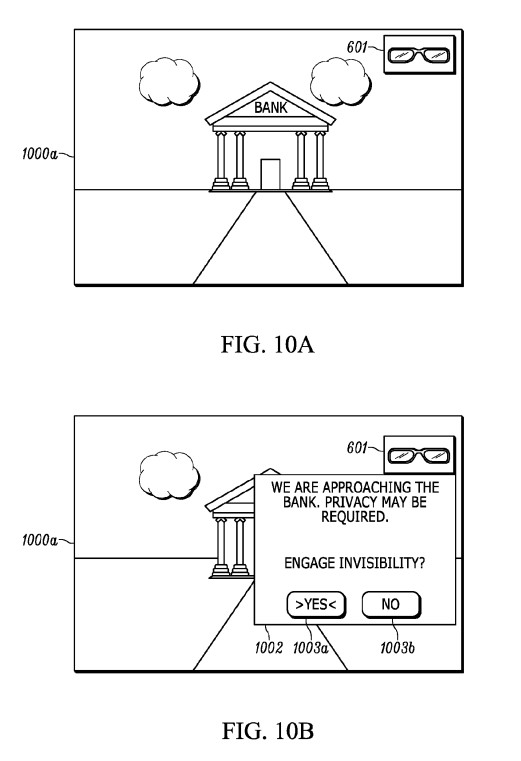 One of the hottest buzzwords in technology trends during 2022 was the “metaverse,” which has become a topic of mainstream attention since Facebook engaged in its major rebrand to Meta last October. Although virtual reality (VR) environments have long been envisaged, recent technological advances such as 5G networks and blockchain-based Web3 Internet platforms have greatly expanded the potential capabilities of metaverse applications. In recent months, IP professionals have increasingly become aware of the growing relevance of the metaverse to the world of intellectual property, and some expect the metaverse to become an important part of our daily working lives, including in the legal profession.
One of the hottest buzzwords in technology trends during 2022 was the “metaverse,” which has become a topic of mainstream attention since Facebook engaged in its major rebrand to Meta last October. Although virtual reality (VR) environments have long been envisaged, recent technological advances such as 5G networks and blockchain-based Web3 Internet platforms have greatly expanded the potential capabilities of metaverse applications. In recent months, IP professionals have increasingly become aware of the growing relevance of the metaverse to the world of intellectual property, and some expect the metaverse to become an important part of our daily working lives, including in the legal profession.
On September 13, the USPTO issued the ‘059 patent to Wilmington, DE-based IoT Holdings, a subsidiary of major patent filing firm InterDigital. The patent claims a method comprising providing a privacy plan configuration interface allowing selection of a privacy plan, receiving the user’s privacy plan selection, monitoring triggering conditions including at least the location of the VR user’s avatar, and automatically activating the selected privacy plan in response to a trigger condition. As the ‘059 patent’s written description notes, opportunities to use avatars in metaverse environments lead to potential risks of surveillance, especially as computer-operated “bot” avatars have become more human-like in their responses. Certain embodiments described by the specification include splitting user avatars into multiple clones or disguising a user’s avatar in a different form than the user’s original avatar.
#3: U.S. Patent No. 11238316, Detection of Counterfeit Virtual Objects
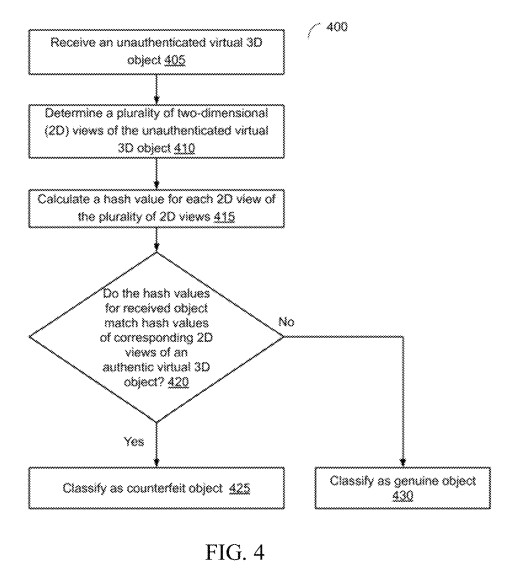 Another new form of technology that has increasingly implicated intellectual property issues, especially as 2022 draws to a close, is the non-fungible token (NFT), a type of digital asset that has a unique digital identifier recorded on a blockchain. While the digital asset could be a screenshot of a publicly-available social media post or a randomly generated image, the unique identifier distinguishes each NFT as a one-of-a-kind asset. This November, the USPTO and the U.S. Copyright Office announced that the two agencies would engage in a joint study of NFTs and related IP issues, a subject of much importance given the great amount of confusion surrounding the ownership of IP rights in the digital media underlying the NFT.
Another new form of technology that has increasingly implicated intellectual property issues, especially as 2022 draws to a close, is the non-fungible token (NFT), a type of digital asset that has a unique digital identifier recorded on a blockchain. While the digital asset could be a screenshot of a publicly-available social media post or a randomly generated image, the unique identifier distinguishes each NFT as a one-of-a-kind asset. This November, the USPTO and the U.S. Copyright Office announced that the two agencies would engage in a joint study of NFTs and related IP issues, a subject of much importance given the great amount of confusion surrounding the ownership of IP rights in the digital media underlying the NFT.
While it doesn’t mention NFTs specifically, the ‘316 patent claims a computer-implemented method for detecting counterfeit three-dimensional (3D) objects that are sold or traded on gaming platforms. Issued to San Mateo, CA-based virtual world developer Roblox Corporation on February 1, the method claimed by the ‘316 patent comprises receiving an unauthenticated 3D object, determining a plurality of 2D views from respective viewpoints of the 3D object, calculating hash values for the 2D views, determining whether the hash values match corresponding 2D views of an authentic virtual 3D object, computing distance values between the 2D view hash values, and classifying the 3D object as a counterfeit 3D object if the respective hash values match. By utilizing hash matching techniques comparing virtual objects to genuine objects known to a particular gaming platform, the claimed method of the ‘316 patent ensures that user-generated content sold or traded on the gaming platform is authentic.
#4: U.S. Patent No. 11403420, System, Method, and Computer Program Product for Maintaining User Privacy in Advertising Networks
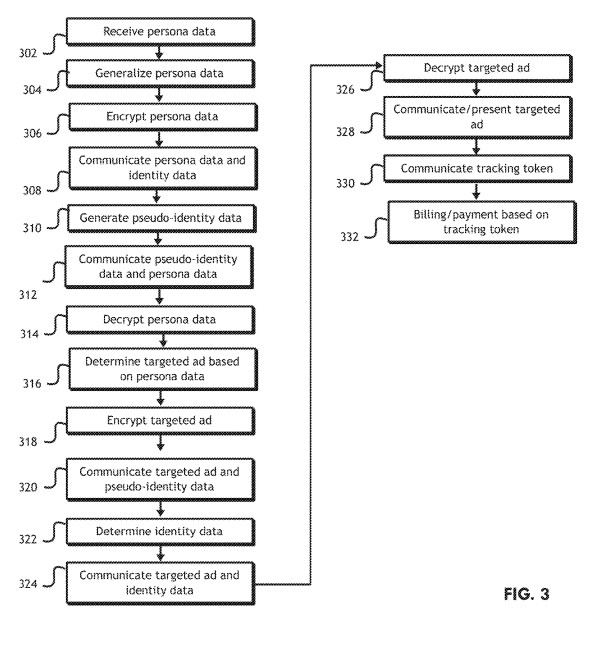 One of the major stories in the tech world this year has been the impact of mobile device user privacy changes implemented by consumer tech giant Apple, which have reduced the average return on investment for mobile advertising expenditures by 40 percent as of this March. The privacy changes, which allow Apple product users to opt out of advertiser data tracking programs, have been cited as a cause for flagging revenues this year at several major tech firms. For instance, social media giant Meta lost a record $232 billion in market value during one day this February after acknowledging impacts to its ad revenue from Apple’s privacy changes.
One of the major stories in the tech world this year has been the impact of mobile device user privacy changes implemented by consumer tech giant Apple, which have reduced the average return on investment for mobile advertising expenditures by 40 percent as of this March. The privacy changes, which allow Apple product users to opt out of advertiser data tracking programs, have been cited as a cause for flagging revenues this year at several major tech firms. For instance, social media giant Meta lost a record $232 billion in market value during one day this February after acknowledging impacts to its ad revenue from Apple’s privacy changes.
Issued on August 2 to San Francisco, CA-based electronics payment firm Visa International Service Association, the ‘420 patent claims a method of generalizing personal data that is associated with a session key and then encrypted by a public key of an advertising network to form a ciphertext. The ciphertext is communicated to a mediator system, which then generates pseudo-identity data that is communicated to the advertising network to generate a first encrypted targeted advertisement that can be decrypted with the session key. The written description of the ‘420 patent indicates that the underlying technology is meant to promote techniques for personalized advertisements, especially within the Internet of Things context, in response to stricter privacy regulations and lack of consumer consent to data tracking techniques.
#5: U.S. Patent No. 9917856, Rule-Based Network-Threat Detection for Encrypted Communications
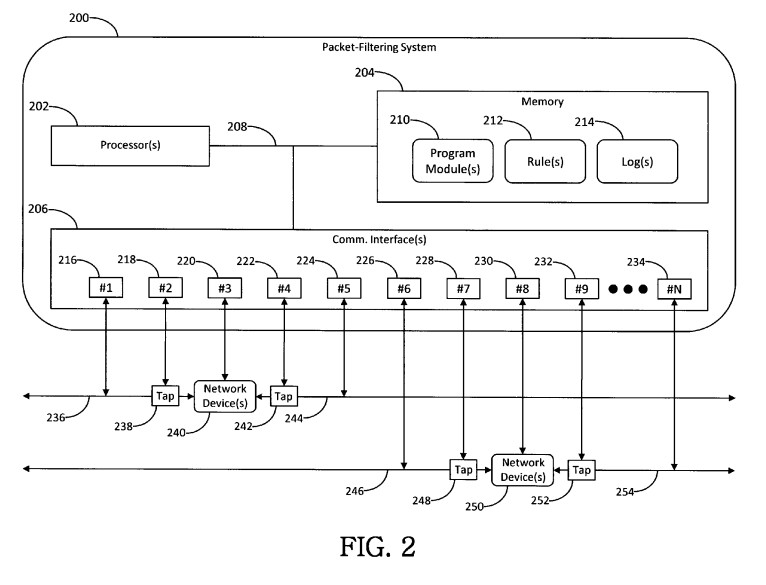 Earlier this December, the U.S. Supreme Court denied a petition for writ of certiorari filed by patent owner and cybersecurity solutions firm Centripetal Networks, which had appealed a ruling this June by the Federal Circuit overturning a $2.75 billion patent infringement damages award to Centripetal. The Federal Circuit reversed one of the largest damages verdicts ever awarded by U.S. district court after finding that the U.S. district judge deciding the case did not satisfy the requirements of a judicial recusal statute by placing previously undiscovered Cisco stock owned by the judge’s wife into a blind trust. Centripetal Network’s petition had noted that there would have been strong ethical questions raised if the Cisco stock had been sold prior to a ruling against Cisco, and argued that the ruling will chill patenting activities by smaller innovative firms.
Earlier this December, the U.S. Supreme Court denied a petition for writ of certiorari filed by patent owner and cybersecurity solutions firm Centripetal Networks, which had appealed a ruling this June by the Federal Circuit overturning a $2.75 billion patent infringement damages award to Centripetal. The Federal Circuit reversed one of the largest damages verdicts ever awarded by U.S. district court after finding that the U.S. district judge deciding the case did not satisfy the requirements of a judicial recusal statute by placing previously undiscovered Cisco stock owned by the judge’s wife into a blind trust. Centripetal Network’s petition had noted that there would have been strong ethical questions raised if the Cisco stock had been sold prior to a ruling against Cisco, and argued that the ruling will chill patenting activities by smaller innovative firms.
The most recently issued patent underlying the multi-billion dollar verdict for Centripetal Networks is the ‘856 patent, which the USPTO granted in March 2018. The patent claims a method for a packet-filtering system that filters packets using rules for receiving network-threat indicators and identifying packets of unencrypted and encrypted data. The method further identifies network-threat indicators in unencrypted data to determine that encrypted data corresponds to the network-threat indicators, addressing drawbacks in conventional systems for detecting network threats from encrypted communications. Along with the damages verdict reversal in the Federal Circuit’s judicial ethics ruling, Centripetal Networks’ CEO Jonathan Rogers testified to the House IP Subcommittee this June regarding Cisco’s use of the Patent Trial and Appeal Board (PTAB) to target Centripetal’s patent rights and prevent enforcement against willful infringement as found in U.S. district court.
#6: U.S. Patent No. 11521200, Creating and Managing Artificial Intelligence Entities Represented by Non-Fungible Tokens on a Blockchain
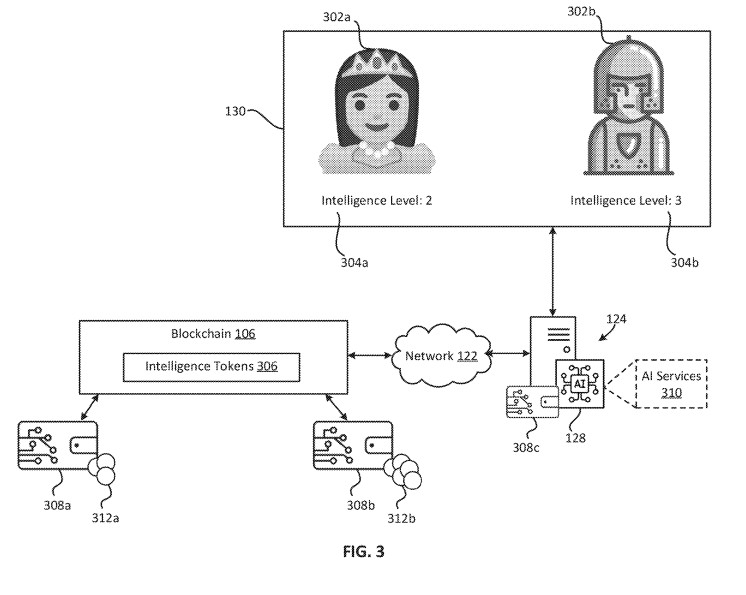 Improvements to functionality in distributed ledger technologies will help advance blockchain applications far beyond cryptocurrencies and simple digital assets. On December 6, the USPTO issued the ‘200 patent to independent inventor Arif Khan of San Francisco, CA protecting computer program code for generating artificially intelligent entities represented on a blockchain using an NFT. The generated AI entity, which can be associated with personality dataset defining characteristics such as voice, psyche and skill attributes, can then reside within a virtual ecosystem where the entity can perform tasks and learn over time. One such virtual ecosystem suggested by the ‘200 patent’s written description is a gaming engine such as the Unreal engine. The patent also describes how the claimed program code can provide AI services such as providing textual or video content in relation to a requested topic in exchange for cryptocurrency tokens, with different levels of AI intelligence being unlocked by higher cryptocurrency payments. The personality dataset associated with the AI entity is also updatable based on tasks performed by the AI entity in the virtual environment.
Improvements to functionality in distributed ledger technologies will help advance blockchain applications far beyond cryptocurrencies and simple digital assets. On December 6, the USPTO issued the ‘200 patent to independent inventor Arif Khan of San Francisco, CA protecting computer program code for generating artificially intelligent entities represented on a blockchain using an NFT. The generated AI entity, which can be associated with personality dataset defining characteristics such as voice, psyche and skill attributes, can then reside within a virtual ecosystem where the entity can perform tasks and learn over time. One such virtual ecosystem suggested by the ‘200 patent’s written description is a gaming engine such as the Unreal engine. The patent also describes how the claimed program code can provide AI services such as providing textual or video content in relation to a requested topic in exchange for cryptocurrency tokens, with different levels of AI intelligence being unlocked by higher cryptocurrency payments. The personality dataset associated with the AI entity is also updatable based on tasks performed by the AI entity in the virtual environment.
#7: U.S. Patent No. 11411840, Systems and Methods for Remote Collaboration
 Of the many ways that the COVID-19 pandemic has indelibly changed our society, the trend towards remote work continues to find many employees of major corporations contributing their productivity from home. From the beginning of the pandemic through this December, the percentage of U.S. office space occupied by businesses dropped from 95 percent down to 47 percent, leading to concerns about reduced downtown activities impacting the tax base of urban communities. Though many companies have led high-profile campaigns to return employees to the office, researchers have found that remote workers have actually increased their engagement with meetings and other business activities since the pandemic broke out in 2020.
Of the many ways that the COVID-19 pandemic has indelibly changed our society, the trend towards remote work continues to find many employees of major corporations contributing their productivity from home. From the beginning of the pandemic through this December, the percentage of U.S. office space occupied by businesses dropped from 95 percent down to 47 percent, leading to concerns about reduced downtown activities impacting the tax base of urban communities. Though many companies have led high-profile campaigns to return employees to the office, researchers have found that remote workers have actually increased their engagement with meetings and other business activities since the pandemic broke out in 2020.
On August 9, Wilmington, DE-based telecommunications firm Adaptive Spectrum and Signal Alignment (ASSIA) was issued the ‘840 patent, which claims a method for providing work from home solutions that accurately diagnose connectivity issues and process quality of experience feedback on user-perceived network performance. The ‘840 patent’s written description adds that the disclosed architecture would enable a business or school to track employee or student productivity across a work from home network comprising network connections from a variety of Internet service providers. The system is also capable of prioritizing network communications within households so that the bandwidth used by a household member playing video games does not impact the connection of another household member attending a video conference for work.
#8: U.S. Patent No. 10335423, Inhibition of HIV Infection Through Chemoprophylaxis
 On November 30, the U.S. Court of Federal Claims unsealed a previous ruling finding that the Centers for Disease Control and Prevention (CDC) had breached material transfer agreements with Gilead Sciences by failing to notify Gilead that the federal agency had filed patent applications on inventions derived from Gilead’s proprietary treatment for human immunodeficiency virus (HIV). The patents obtained by the CDC were previously asserted in a November 2019 lawsuit filed by the federal government against Gilead against the use of Gilead’s HIV treatment for pre-exposure prophylaxis (PrEP) for the prevention of HIV transmission.
On November 30, the U.S. Court of Federal Claims unsealed a previous ruling finding that the Centers for Disease Control and Prevention (CDC) had breached material transfer agreements with Gilead Sciences by failing to notify Gilead that the federal agency had filed patent applications on inventions derived from Gilead’s proprietary treatment for human immunodeficiency virus (HIV). The patents obtained by the CDC were previously asserted in a November 2019 lawsuit filed by the federal government against Gilead against the use of Gilead’s HIV treatment for pre-exposure prophylaxis (PrEP) for the prevention of HIV transmission.
The ‘423 patent, issued by the USPTO to the U.S. Department of Health and Human Services in July 2019, is one of the latest issued patents involved in both the CDC’s 2019 suit against Gilead and the recent CFC ruling on Gilead’s breach of contract claims. It claims a process of protecting a primate host from self-replicating infection by an immunodeficiency virus by selecting an uninfected host and administering to the uninfected host a pharmaceutically effective amount of emtricitabine and tenofovir prior to exposure to the immunodeficiency virus. According to the CFC’s recent ruling, the CDC obtained this and other patents in violation of its responsibility to notify Gilead, who supplied proprietary tenofovir disoproxil fumarate (TDF) to the CDC for use in a PrEP study under the terms of a transfer agreement that retained Gilead’s rights to inventions derived from the CDC’s use of TDF.
#9: U.S. Patent No. 11273385, Method for Improving Health of Elderly Person Based on 5G Signal Transmission Technology
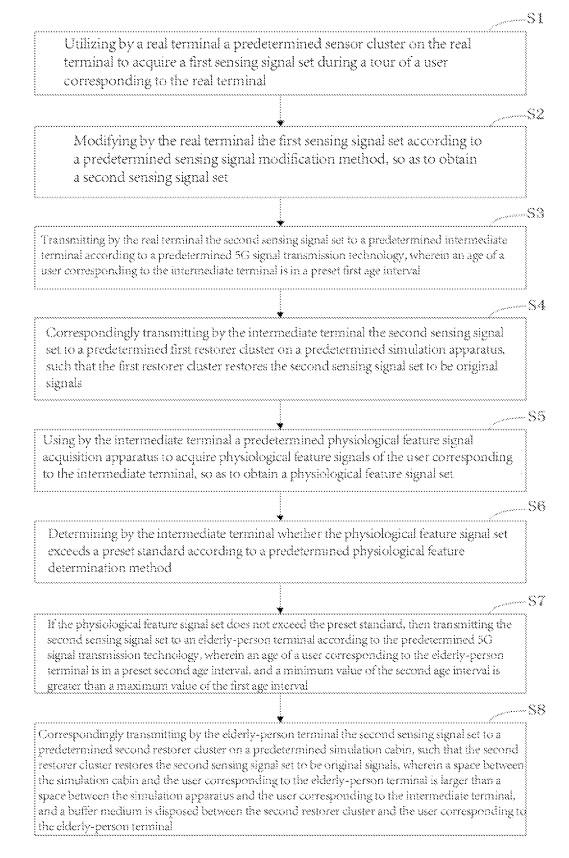 When 5G networks and consumer adoption of compatible devices become widespread, the digital experience afforded by multiple gigabyte per second (Gbps) download speeds and incredibly low latency is expected to radically transform the quality of the content that can be transmitted across those networks. The technology claimed by the ‘385 patent, which was issued to Guangdong Polytechnic Normal University of Guangzhou, China, on March 15, covers a method of transmitting user age and physiological features from a real terminal to an intermediate terminal and determining whether a calculated age interval and physiological feature signal set exceed certain value thresholds. As the ‘385 patent’s written description notes, the claimed technology is useful for helping elderly individuals with physical limitations experience “tours,” or virtualizations of real-world experiences that they would otherwise be prevented from experiencing. Virtual experiences that could be delivered in this way include amusement park rides, rafting and mountain hiking, with the method being capable of modifying signals to reduce sensory outputs that could be harmful to the elderly individual based on their physiological characteristics.
When 5G networks and consumer adoption of compatible devices become widespread, the digital experience afforded by multiple gigabyte per second (Gbps) download speeds and incredibly low latency is expected to radically transform the quality of the content that can be transmitted across those networks. The technology claimed by the ‘385 patent, which was issued to Guangdong Polytechnic Normal University of Guangzhou, China, on March 15, covers a method of transmitting user age and physiological features from a real terminal to an intermediate terminal and determining whether a calculated age interval and physiological feature signal set exceed certain value thresholds. As the ‘385 patent’s written description notes, the claimed technology is useful for helping elderly individuals with physical limitations experience “tours,” or virtualizations of real-world experiences that they would otherwise be prevented from experiencing. Virtual experiences that could be delivered in this way include amusement park rides, rafting and mountain hiking, with the method being capable of modifying signals to reduce sensory outputs that could be harmful to the elderly individual based on their physiological characteristics.
#10: U.S. Patent No. 11233757, Systems and Methods for Electronic Group Exchange of Digital Business Cards During Video Conference, Teleconference or Meeting at Social Distance
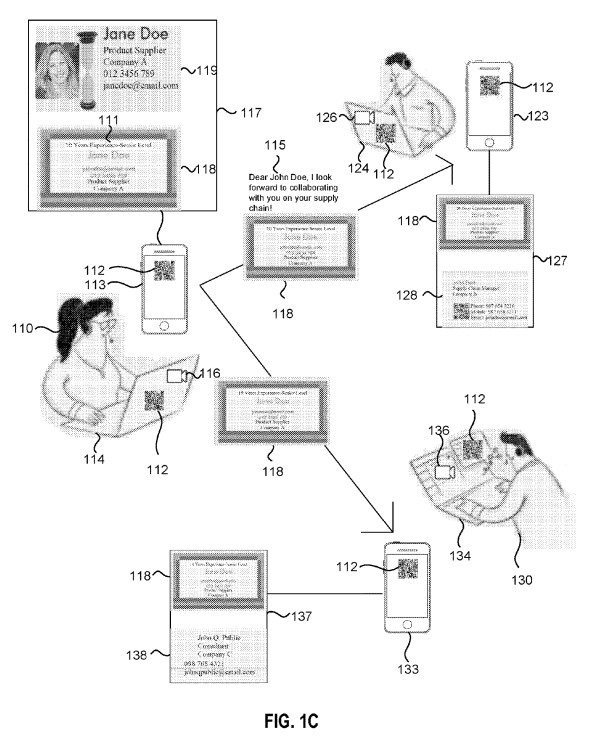 The final candidate on our Top 10 Patents for 2022 list is another patent covering a critical improvement to a technology that has become commonplace in the COVID-19 era. In the early days of the pandemic, online video conferencing experienced a massive boom that continues to support the remote work revolution. Between December 2019 and April 2020, video conferencing firm Zoom saw daily meeting participants grow from 10 million to more than 300 million.
The final candidate on our Top 10 Patents for 2022 list is another patent covering a critical improvement to a technology that has become commonplace in the COVID-19 era. In the early days of the pandemic, online video conferencing experienced a massive boom that continues to support the remote work revolution. Between December 2019 and April 2020, video conferencing firm Zoom saw daily meeting participants grow from 10 million to more than 300 million.
The ‘757 patent, issued by the USPTO on January 25 to business networking solution provider TraDove of Palo Alto, CA, claims a computer system having a server storing data of business cards associated with client devices and a memory executable by processors to receive a group QR or scannable code created by a first user’s client device, transmit the code to other devices to indicate an invitation to exchange data, and detect scans of the code indicating approval of the invitation to exchange data. As the ‘757 patent’s written description notes, the claimed invention facilitates a touchless, seamless exchange of business cards among a group of contacts. While the embodiments disclosed in the specification discuss the use of the claimed computer system with remote conferencing platforms, anyone who has attended a live business conference in-person would recognize the value of quickly being able to share business information with a group of new contacts in a single interaction.
Image Source: Deposit Photos
Image ID: 41196211
Author: roobcio

![[IPWatchdog Logo]](https://ipwatchdog.com/wp-content/themes/IPWatchdog%20-%202023/assets/images/temp/logo-small@2x.png)

![[Advertisement]](https://ipwatchdog.com/wp-content/uploads/2024/04/Patent-Litigation-Masters-2024-sidebar-early-bird-ends-Apr-21-last-chance-700x500-1.jpg)

![[Advertisement]](https://ipwatchdog.com/wp-content/uploads/2021/12/WEBINAR-336-x-280-px.png)
![[Advertisement]](https://ipwatchdog.com/wp-content/uploads/2021/12/2021-Patent-Practice-on-Demand-recorded-Feb-2021-336-x-280.jpg)
![[Advertisement]](https://ipwatchdog.com/wp-content/uploads/2021/12/Ad-4-The-Invent-Patent-System™.png)







Join the Discussion
One comment so far.
Model 101
December 27, 2022 08:17 amAll abstract.
They just told their competitors how to do it.